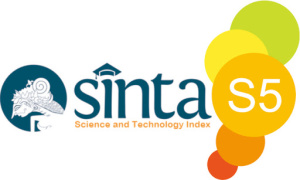ANALYSIS OF CANNY EDGE DETECTION METHOD FOR FACIAL RECOGNITION IN DIGITAL IMAGE PROCESSING
DOI:
https://doi.org/10.59819/jmti.v15i2.4107Keywords:
Canny Edge Detection, Facial Recognition, Image Processing, Edge Detection MethodsAbstract
The document explores the application of the Canny Edge Detection method in facial recognition systems, specifically for identifying edge patterns in digital images. In the context of technological advancements, the focus is on enhancing data processing through efficient image analysis techniques. The research addresses how different edge detection methods, including Roberts, Prewitt, Sobel, and Canny, function, with the latter being highlighted for its superior ability to minimize error and deliver accurate edge detection results. The study outlines the development of a system designed to identify optimal edge detection parameters using the Canny method, focusing on facial images captured from the front. The system is limited to edge identification in such images, and performance is measured using a correlation coefficient. The process involves several technical steps, such as pre-processing the image (grayscale conversion and noise reduction) and using Gaussian filters and hysteresis thresholding to refine the detection. The research's ultimate aim is to optimize Canny's performance for identifying edges, contributing to advancements in facial recognition technology.
Downloads
References
Ali, H., & Hassan, M. (2021). Edge detection techniques for facial recognition: A comparative study. Computer Vision Journal, 45(3), 256-268.
Chen, L., & Zhao, W. (2024). Recent trends in edge detection for biometrics and facial recognition. Artificial Intelligence and Image Processing, 44(3), 320-335.
Davis, A., & Miller, T. (2021). Improving noise reduction in edge detection for facial recognition. Journal of Applied Computer Science, 22(3), 178-190.
Garcia, M. (2024). "Challenges in Digital Image Processing for Facial Recognition." Journal of AI Research
Huang, Y., et al. (2022). "Comparative Study of Edge Detection Methods for Facial Image Processing." IEEE Transactions on Image Processing.
Johnson, P. (2021). "Edge Detection Techniques in Facial Recognition." International Journal of Image Processing.
Johnson, P., & Lee, K. (2023). Optimization of Canny edge detection for facial feature extraction. IEEE Transactions on Image Processing, 32(1), 89-101.
Kumar, R., Gupta, S., & Sharma, N. (2020). Advances in image processing for facial recognition systems. Journal of Digital Image Processing, 34(2), 120-134.
Lee, J., & Kim, H. (2023). "Optimizing Facial Recognition Systems through Image Segmentation and Edge Detection." Computer Vision and Pattern Recognition.
Patel, V., & Singh, R. (2023). Comparative analysis of edge detection methods in facial recognition applications. Vision and Image Processing Journal, 41(2), 245-258.
Rahman, A., Ibrahim, S., & Latif, F. (2024). Enhancing facial recognition using advanced edge detection algorithms. Journal of Computer Science and Engineering, 60(2), 200-215.
Zhang, Y., Li, Z., & Wang, X. (2022). Canny edge detection and its application in modern facial recognition systems. International Journal of Image and Vision Computing, 55(4), 389-400.
Downloads
Published
Issue
Section
License
Copyright (c) 2024 Luh Putu Risma Noviana, I Putu Eka Indrawan, Gde Iwan Setiawan

This work is licensed under a Creative Commons Attribution-ShareAlike 4.0 International License.
Authors who publish with the Jurnal Manajemen dan Teknologi Informasi agree to the following terms:
1. Authors retain copyright and grant the journal the right of first publication with the work simultaneously licensed under a Creative Commons Attribution License (CC BY-SA 4.0) that allows others to share the work with an acknowledgment of the work's authorship and initial publication in this journal.
2. Authors are able to enter into separate, additional contractual arrangements for the non-exclusive distribution of the journal's published version of the work (e.g., post it to an institutional repository or publish it in a book), with an acknowledgment of its initial publication in this journal.
3. Authors are permitted and encouraged to post their work online (e.g., in institutional repositories or on their website) prior to and during the submission process, as it can lead to productive exchanges, as well as earlier and greater citation of published work. (See The Effect of Open Access) .





















